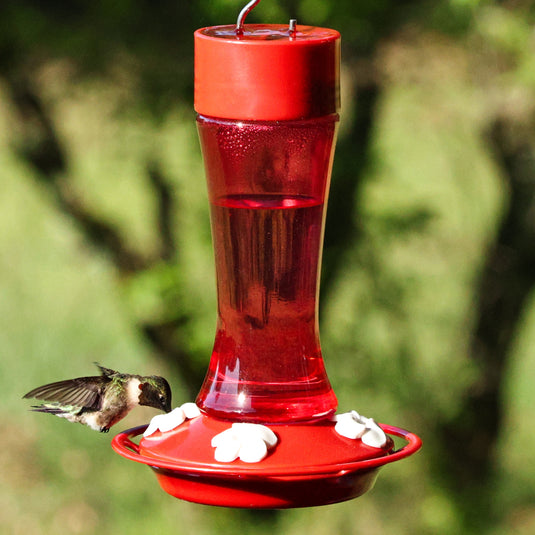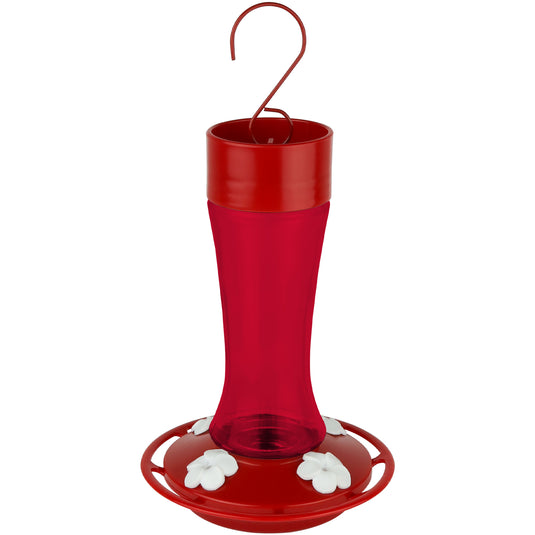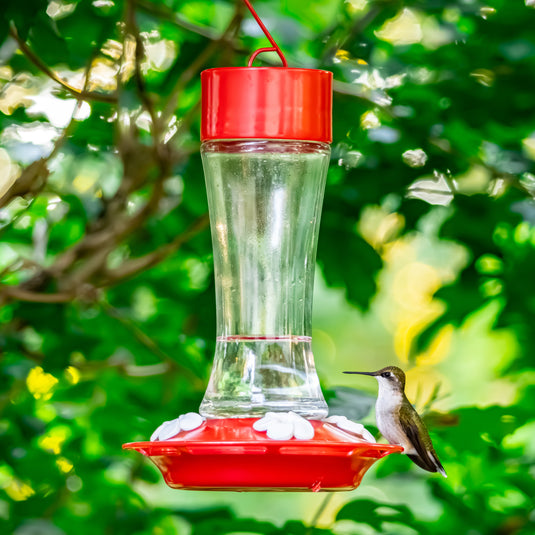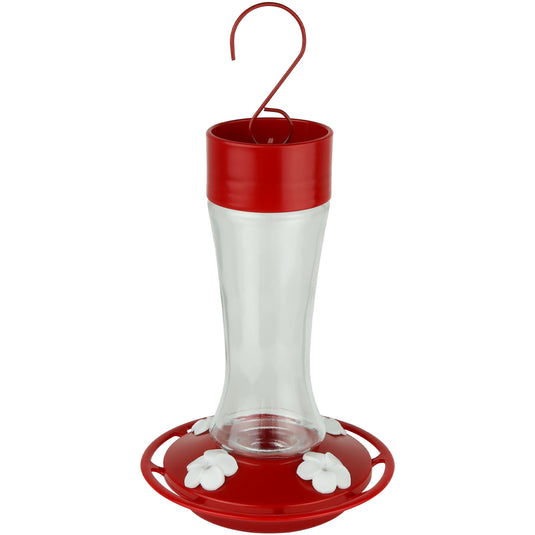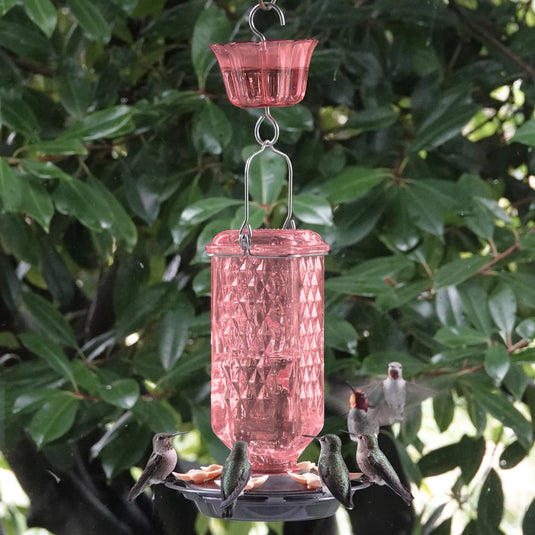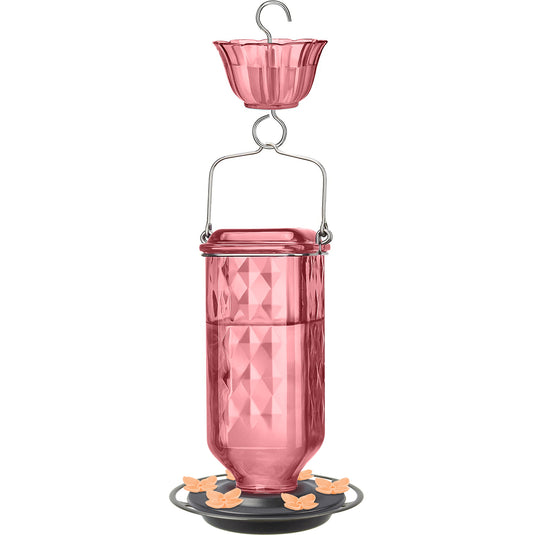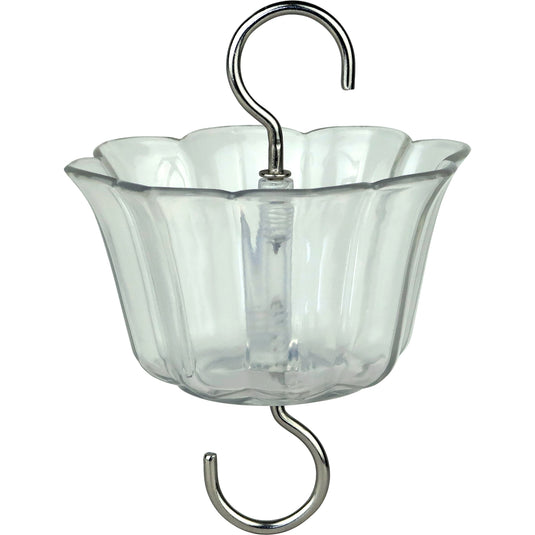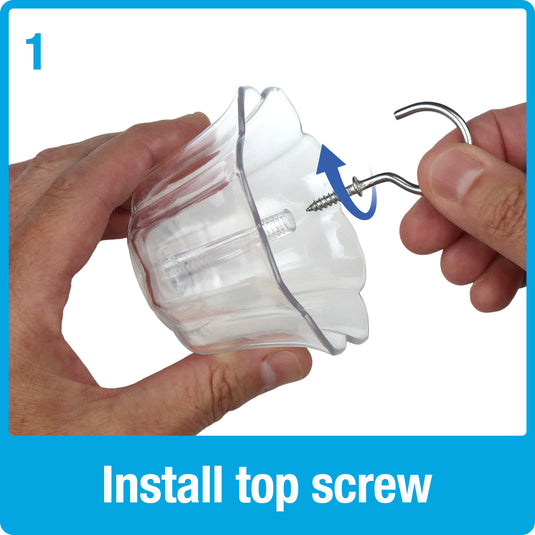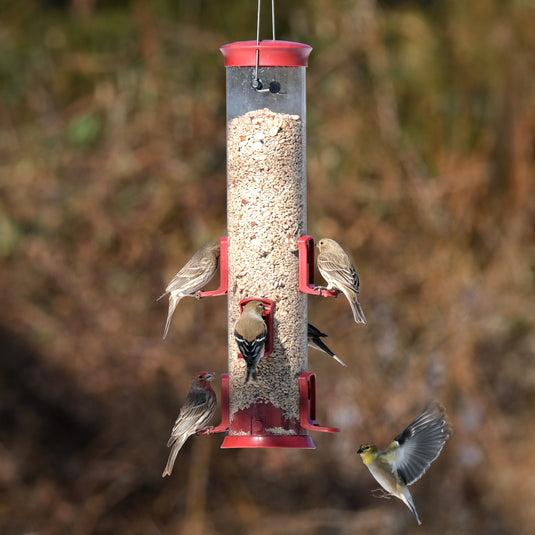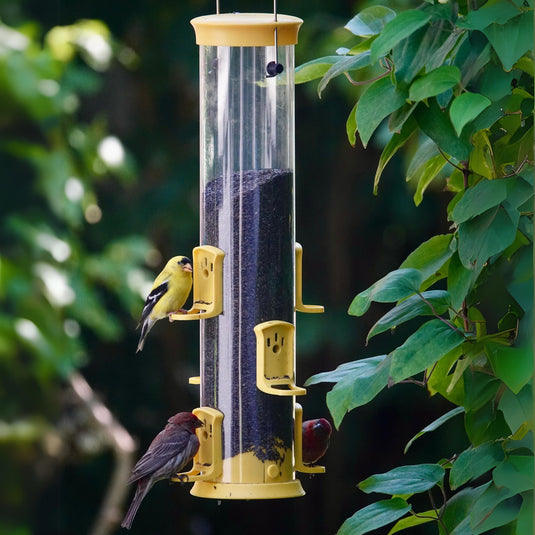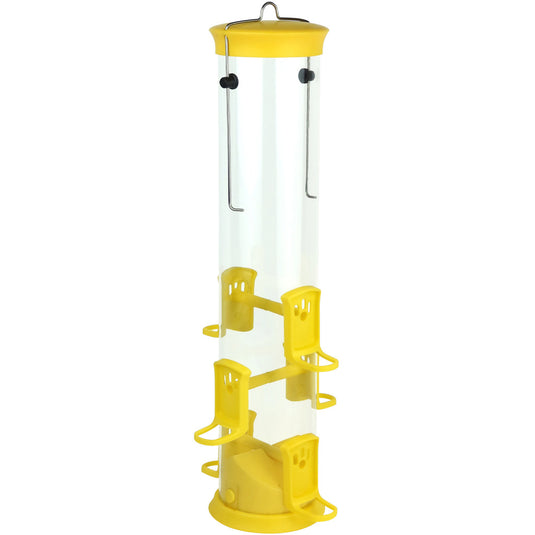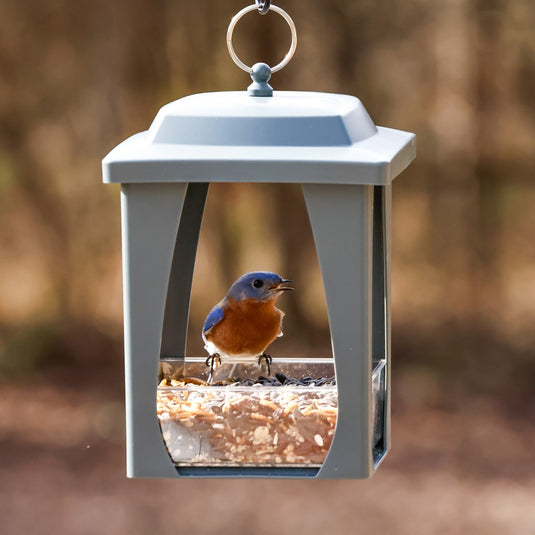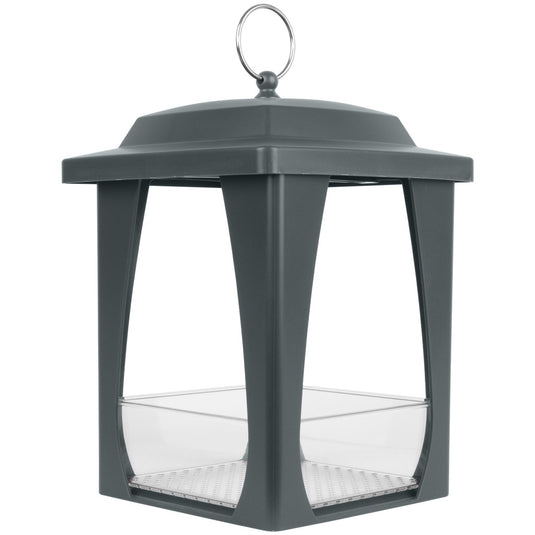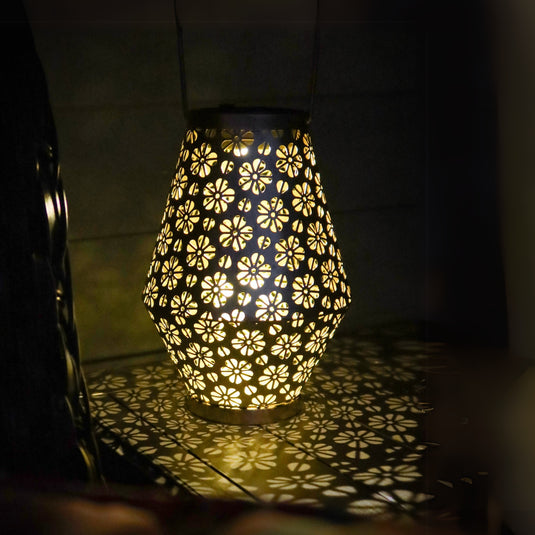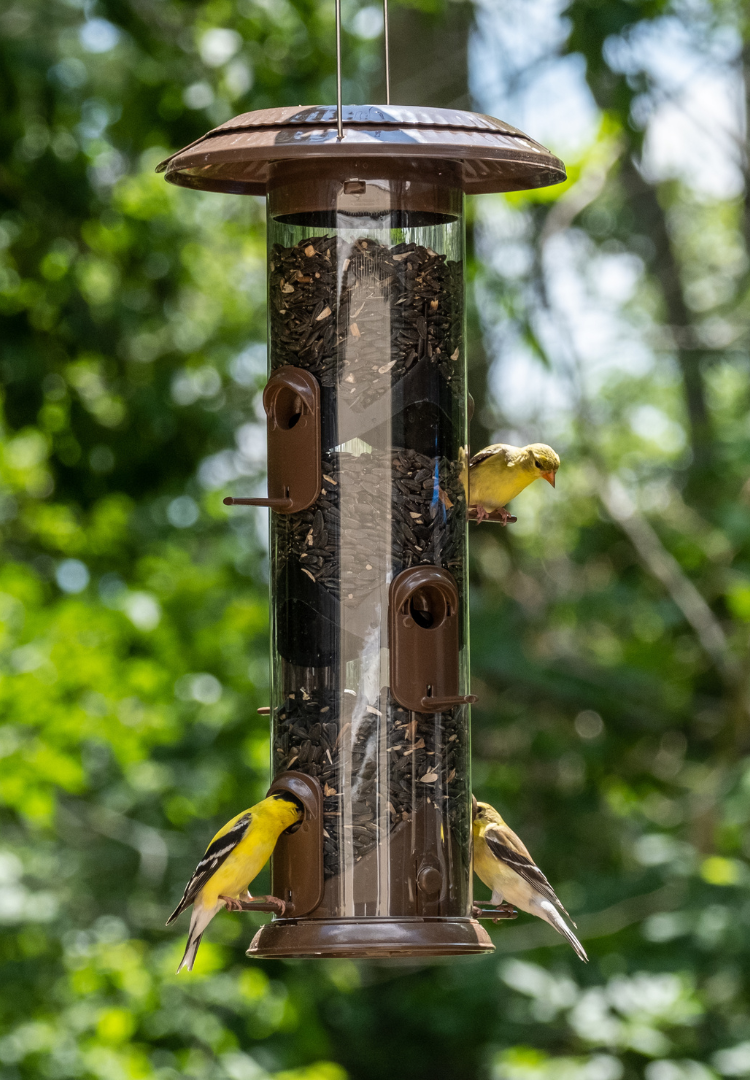With their cheerful songs, bright plumage, and lively personalities, finches bring color and energy to any yard. These small seed-eating birds are a joy to watch as they flit about in flocks, feeding and chattering. The right finch bird feeder can make your yard a favorite stop for these charming birds.
Let’s explore the best bird feeders for finches, along with tips to attract them safely and successfully.

Pictured: American Goldfinches on Wide Deluxe Funnel Flip-Top Tube Feeder
Best bird feeders for finches
Quick answer: The best bird feeders for finches are thistle feeders (Nyjer feeders), tube feeders with small ports and mesh feeders filled with thistle/Nyjer seed or fine sunflower chips.
Mesh Feeders
Mesh feeders are a top pick for finches. The mesh surface gives birds plenty of room to cling while they pull out seeds. These durable feeders hold Nyjer or sunflower chips and let multiple finches feed at once.
Tube Feeders
Tube feeders are a traditional choice for finches, especially when designed for Nyjer seed, also known as thistle. A well-made thistle feeder for birds has small feeding ports that conserve seed and prevent waste.
-
Finch Tube Feeders: Tall and narrow, these feeders cater perfectly to goldfinches, House Finches, and siskins. The small ports allow only small-beaked birds to feed.
-
Upside-Down Finch Feeders: Finches can feed upside down with ease, but larger nuisance birds cannot - making these naturally starling and grackle-resistant.
-
Finch Feeder Squirrel Proof Options: Many modern designs feature seed cages or weight-sensitive perches to block squirrels while still letting finches dine freely.
Platform Feeders
Platform feeders offer an open, easy-access design that attracts a wide variety of birds, including finches. Window feeders, a type of platform feeder, attach directly to your window with suction cups - perfect for watching finches feed up close.
Hopper Feeders
Hopper feeders are a favorite for finches, giving them plenty of room to perch and feed. Many hopper feeders even come with attached suet cages - perfect for offering a little extra winter energy that finches will happily nibble.
For the best chance at attracting finches:
-
Keep feeders clean: Finches are social but sensitive to bacteria. Clean your feeders weekly with a mild bleach solution and rinse well.
-
Use fresh seed: Nyjer (thistle) seed loses its appeal quickly when stale. Replace it every few weeks to keep finches interested.
-
Add water: A shallow birdbath with will draw in finches year-round.
-
Be patient: It can take up to two weeks for finches to find a new feeder, especially if natural food sources are abundant nearby.
What do finches eat?
Depending on the species, a finch’s diet can include seeds, fruits, and insects. Their favorites at feeders include:
-
Nyjer (thistle) seed
-
Black oil sunflower
-
Cracked corn
-
Suet
-
Grape jelly (House Finches have been known to sample the grape jelly in oriole feeders!)
Note: Remember that these are seed preferences! Many times, finches have been seen feeding on seed types outside of this list. The seed and bird types listed are based on the most common species and their preferred seed types.
Where to place finch feeders
Finches prefer open, visible areas where they can feed safely in groups.
-
Place feeders roughly 10 feet from shrubs or trees for quick cover.
-
Keep feeders closer than 3 feet from a window or farther than 15 feet from a window to help prevent fatal window collisions.
-
Don’t be afraid to cluster multiple feeders together - finches love to feed in flocks!
-
To reduce squirrel interference, hang feeders coupled with baffles or choose a squirrel proof model.

Pictured: House Finch pair on Perfect Picnic Recycled Plastic Bird Feeder
Why aren’t finches coming to my feeder?
There are many factors that could cause a bird to choose a different source of food. One thing to keep in mind is that birds are creatures of habit. It may take some time for the birds to get used to a new landing pattern or learn the mechanics of getting out the seed from a new feeder. If you don’t see any finches at your feeders in the first few weeks of having them out, try these troubleshooting suggestions to make sure you’re setting yourself up for success.
-
Check the seed: Old or wet seed (especially Nyjer/thistle which spoils quickly) is the number one reason finches lose interest.
-
Cluster your feeders: If you already own and are having success with other bird feeders, try placing the new feeder near the existing feeders.
-
Offer water: Even a simple birdbath can turn curious finches into regular guests.
-
Take down other feeders: If you have other bird feeders in your yard, try temporarily taking them down until the birds find and use the new feeder.
-
Keep it clean: Even if your feeder hasn’t had many visitors yet, changes in weather or heat can cause dirt or bacteria to form on a new feeder after a few weeks. Feeders should be cleaned at least once a month.
Common finches in your backyard
Over a dozen finch species can appear across North America, but these are the most common:
-
American Goldfinch
-
House Finch
-
Purple Finch

Finches may be small, but their beauty and cheerful songs make them some of the most rewarding birds to attract. With a high-quality finch feeder and fresh seed, your yard can become a year-round finch paradise!
RELATED ARTICLES
-


